#cepheid star
Text
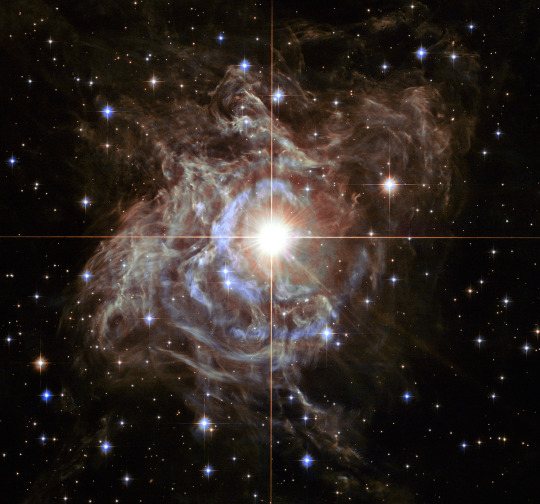
RS Puppis, Cepheid Variable Star
#stars#outer space#space#cosmic#cosmos#astral#astro#gold#universe#galaxies#space dust#cepheid star#beautiful#beauty#escape#pretty#spiritual#dark#astrophotography#photography#nasa#hubble
86 notes
·
View notes
Text
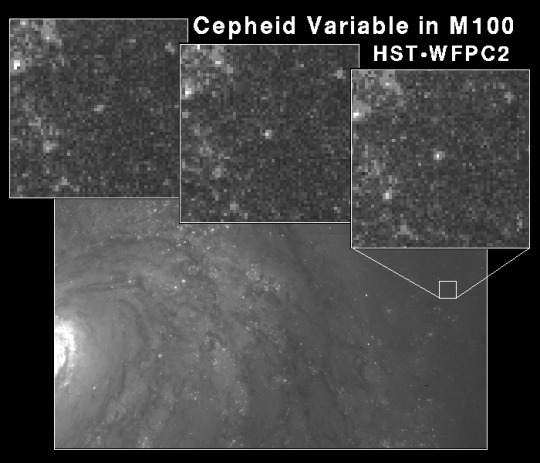
The Cepheids of M100 - January 10th, 1996.
"Can this blinking star tell us how fast the Universe is expanding? Many astronomers also believe it may also tell us the age of the Universe! The photographed "Cepheid variable" star in M100 brightens and dims over the course of days as its atmosphere expands and contracts. A longer blinking cycle means an intrinsically brighter star. Cepheid variable stars are therefore used as distance indicators. By noting exactly how long the blinking period is and exactly how bright the star appears to be, one can tell the distance to the star and hence the star's parent galaxy. This distance can then be used to match-up easily measured recessional velocity ("redshift") with distance. Once the "Hubble relation" was determined for M100, it can then apply to all galaxies - and hence can tell us how fast the Universe is expanding."
32 notes
·
View notes
Text
Wrote down a little bullshitted up lineage of primes thing as a treat, and I threw in a few of primes for a gap in between Prime Nova and Nova Prime, the latter is in my list as "Nova Prime 2: electric boogaloo" which is hilarious.
The oc primes:
Prime Proxima, Prime Plerion, Caerulus Prime, Cepheidis Prime, Asterism Prime, Luminus Prime, and Theta prime
#i am aware Luminus Prime is luminous minus the O. that was on purpose because i wanted another –minus prime#I've thought so much about calling a character theta btw#most of these guys and gals in my mind had relatively short reigns as primes and the majority did not have the matrix#(if any)#yes 5/7 use she/her pronouns bc i ran with the first pronouns that popped into my mind with their names#it's an interesting idea that for a while the title of prime came before the first half of the name rather than after#on my list you can also tell when either the primes started to become shittier people or at least when history recording the shitty stuff#i am aware that Caerulus means blue. he is the blue prime.#some of them are named for astronomy terminology!)#Proxima is named for Proxima Centauri#Cepheidis is named for Cepheid Variables / Cepheids which are a type of star#an Asterism is a star formation smaller than a constellation#aaand a Plerion is another name for pulsar wind nebulas!#... the name Imperator is calling to me again though.#again a word i like the sound of and i just think it's bullshit it's wasted on an invalid taxon#maccadam#transformers#ocs#basically all ocs for the sake of ocs#nova prime
10 notes
·
View notes
Text

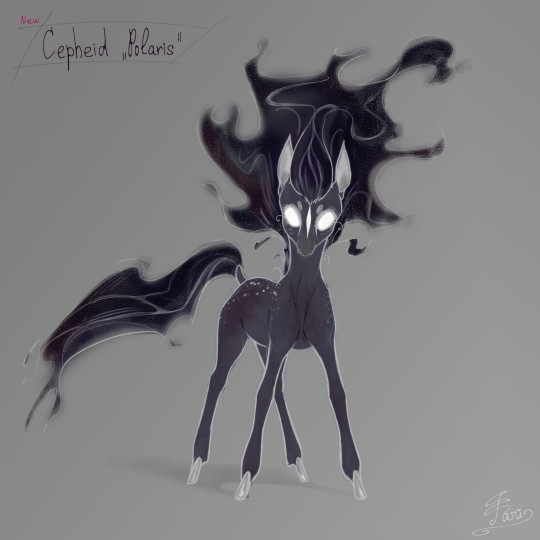
Three years (?) ago, I was excited by the idea of drawing a ponyfication of Cepheids. At that time, I was actively drawing ponies from MLP and OCs based on this show. And I did the first sketch..... but the idea ended up getting dropped. Today I suddenly remembered about it and redrawn the old one. Still scant...... What have I done with the palette?? ?? ?
3 notes
·
View notes
Link
Embark on a cosmic odyssey with Andrew Dunkley and Professor Fred Watson as they unravel the mysteries of the universe's expansion and unearth a colossal Martian secret in this episode of Space Nuts. Dive into the perplexing debate over the universe's expansion rate, as new findings from the James Webb Space Telescope reignite the Hubble tension. With precision cosmology at our fingertips, discover why the universe's growth spurs more questions than answers, leaving us to ponder the potential for undiscovered physics that could reshape our cosmic understanding.
Then, join the expedition to Mars where a hidden giant lay dormant until now. The discovery of a monstrous volcano, nestled in the labyrinthine Noctis Labyrinthus, has scientists buzzing with excitement. Towering over 9,000 meters with a footprint spanning 450 kilometers, this Martian marvel could hold vital clues to the planet's fiery past and icy secrets beneath its surface. As explorers eye this volcanic behemoth as a future landing site, the prospects of unlocking Mars' ancient mysteries have never been more alluring.
From the enigmatic expansion of the cosmos to the volcanic vistas of Mars, this episode is a treasure trove for space enthusiasts and cosmic detectives. Tune in and let your imagination soar to new interstellar heights with Space Nuts. Remember to subscribe and follow us for more celestial tales and astronomical adventures. Until our next galactic gathering, keep your eyes to the skies and your heart in the stars.
🚀 Episode Chapters
(00:00) Andrew Dunkley introduces the cosmic conundrums
(05:12) The Hubble tension and the universe's expansion speed
(11:34) Professor Fred Watson discusses the James Webb Space Telescope's findings
(18:20) Unveiling the newly discovered Martian volcano
(24:45) The potential of Mars' glacial ice and future explorations
(28:57) Wrapping up with a look ahead to Space Nuts Q&A
This episode is brought to you by NordPass - the best way to manage all your passwords and lose that angst for not very much money. Like... seriously cheap... check out the special discount deal at www.bitesz.com/nordpass
#acoustic#background#baryonic#cepheid#constant#cosmic#expansion#hubble#ia#james#microwave#space#speed#stars#supernovae#telescope#type#universe#variable#webb
0 notes
Text
Astronomers were not even aware of a universe beyond the Milky Way, which makes it all the more remarkable that the modern scientific approach to the description of the universe emerged almost fully formed from Einstein's Theory of General Relativity before Edwin Hubble published the discovery of his Cepheid variable star in Andromeda and settled Shapley and Curtis's Great Debate.
"Human Universe" - Professor Brian Cox and Andrew Cohen
#book quote#human universe#brian cox#andrew cohen#nonfiction#astronomer#cosmology#awareness#universe#milky way#remarkable#modern science#albert einstein#general relativity#edwin hubble#scientific discovery#cepheid#andromeda#star#debate#harlow shapley#heber curtis
1 note
·
View note
Text
What is our galaxy? How do we know where we are located within it?
The term galaxy refers to an immense collection of stars and interstellar matter, far larger than a star cluster, with typically 10^11 - 10^12 stars. Our Milky Way Galaxy doesn't just contain stars, but also copious interstellar dust. This dust obscures the Galaxy's true dimensions (called interstellar extinction, makes distant objects appear dim).
Our sun is located in the disk of our Milky Way Galaxy about 8,000 pc from the galactic center. This was found using the globular clusters above our Milky Way Galaxy's disk plane. By finding our distance from them as we move using pulsating variable stars like Cepheids and RR Lyrae, we could find the general location of the galaxtic center. Being ablbe to find the distance between us and RR Lyrae was incredibly important, as they are found abundantly in globular clusters of stars.
Globular Clusters are found spread along the the Milky Way and their distributions were three-dimensionally mapped to show us that they form a huge spherical distribution centered not on the Earth, but rather about a point in the Milky Way several kiloparsecs away in the direction of Sagittarius. This point must coincide with the center of the Galaxy.
The Formula for finding the distances of stars:

#stars#milky way galaxy#astronomy#brightness is luminosity over distance squared#distance from star#globular glusters#RR Lyrae#Cepheid#center of galaxy#sagittarius#constellation#nerd shit
0 notes
Photo
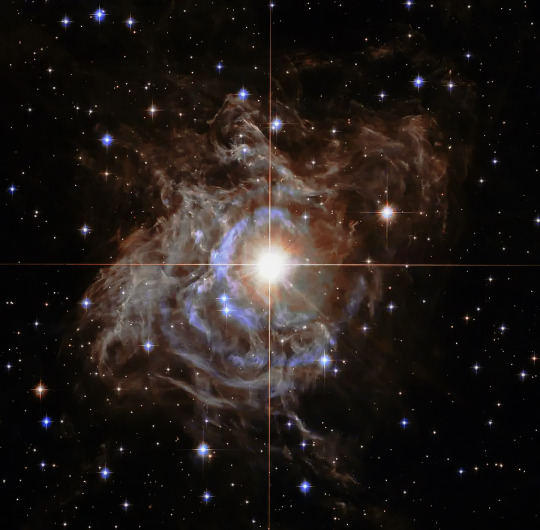
RS Puppis, one of the brightest Cepheid variable stars © Hubble
#hubble telescope#stars#space#astrophotography#astronomy#planet#galaxy#solar system#milky way#planets#nebula#variable star#universe#cosmos#nasa
3K notes
·
View notes
Text
In Stars and Time: Axis Masterpost
Axis is a post-game au for the game "In Stars and Time" where I explore ideas and themes from the game and the impact from it's events in a comic format~ Beware, spoilers of the whole game!

ORBITAL (Act 3 Comic) - Nothing seem out of ordinary that day: the party takes a break from their long journey to save Vanguarde from the King like usually, but then Bonnie runs into a strong Sadness.
SOLAR WIND - A week passed since Siffrin broke out of loops, but the wounds on his heart are bleeding still and about to get worse for everyone involved.
REDSHIFT - The Party takes the train to the next city to get to Bambouche. Siffrin and Odile have a talk about heritage, but it seems this gonna be less peaceful as Sadnesses still roaming around after King's defeat.
GRAVITATIONAL WAVES - Siffrin and Isabeau sit down and figure their feelings and what it means for them.
CEPHEIDS - Mirabelle and Siffrin spend time together as "Feeling Buddies".
ROCHE LIMIT - The Party finally reaches Bambouche and Bonnie retunited with their beloved sister. But things went rough as Nille finds out details about what happened when Siffrin was trapped in the timeloop.
ACCRETION DISK - The Party visits Dormont before traveling all over the world, Siffrin is coping well enough, but there is hidden danger lurks in the House of Dormont once again.
96 notes
·
View notes
Text
HOW IS OUR UNIVERSE EXPANDING RAPIDLY??
Blog#375
Wednesday, February 14th, 2024.
Welcome back,
A warp in the fabric of space and time that acted like a giant magnifying glass may help solve a celestial mystery about the rate of the universe's expansion, which could shed light on the ultimate fate of the universe, a new study finds.
The universe has continued expanding since it was born about 13.8 billion years ago.
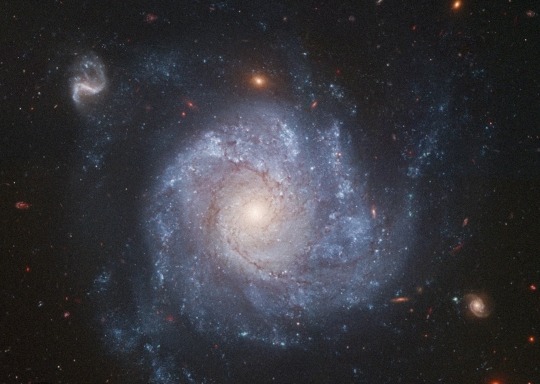
By analyzing the present rate of cosmic expansion, known as the Hubble constant, scientists can estimate the age of the universe and details of its fate, such as whether it will expand forever, collapse upon itself or rip apart completely.
Scientists use two primary strategies to measure the Hubble constant. One involves monitoring nearby objects whose properties researchers understand well, such as stellar explosions known as supernovas and pulsating stars called Cepheid variables, to estimate their distances.
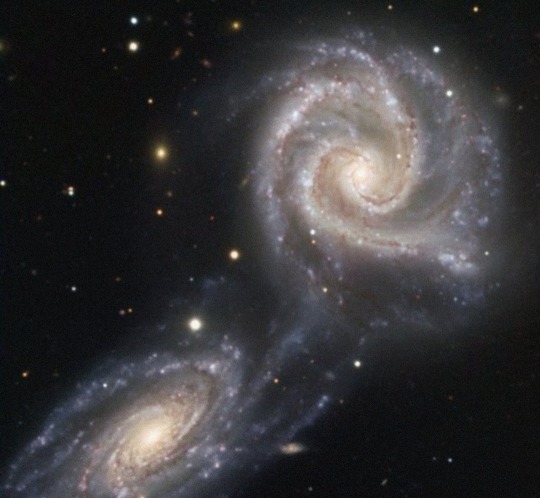
The other focuses on the cosmic microwave background (CMB), the leftover radiation from the Big Bang, examining how it has changed over time to estimate how quickly the cosmos has expanded.
However, this pair of methods has produced two different results for the value of the Hubble constant. Data from the CMB suggests that the universe is expanding at the rate of about 41.9 miles (67.5 kilometers) per second per megaparsec (a distance equivalent to 3.26 million light-years).
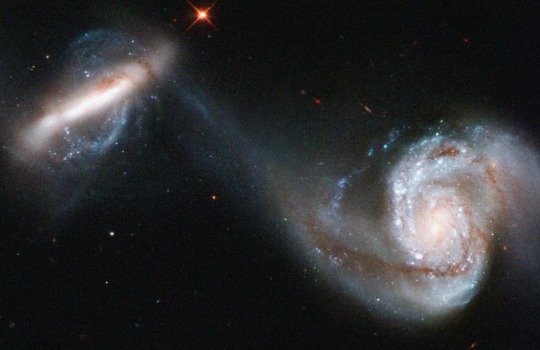
In contrast, data from supernovas and Cepheids in the nearby universe suggests a rate of about 46 miles (74 km) per second per megaparsec.
This inconsistency suggests that the standard cosmological model — scientists' current understanding of the universe's structure and history — might be wrong. Resolving this controversy, known as the Hubble constant conflict, could shed light on the evolution and fate of the cosmos.

In the new study, an international research team explored another way to measure the Hubble constant. This approach depends on Einstein's model of gravity, in which mass distorts space-time, a bit like how a bowling ball might stretch a rubber sheet it was resting on. The greater the mass of an object, the more that space-time curves around the item, and so the stronger the object's gravitational pull is.
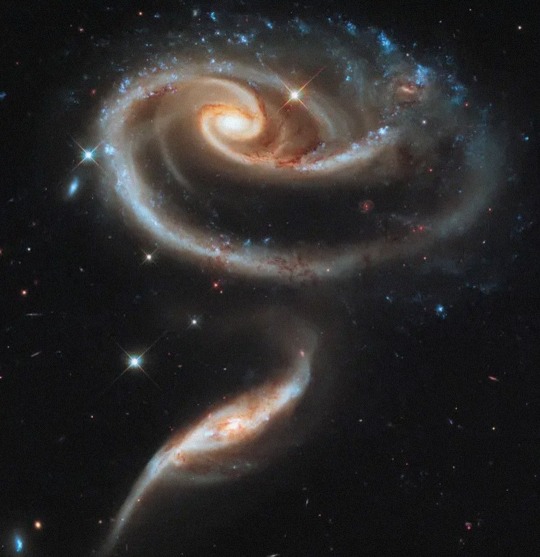
The way in which gravity behaves means that it can bend light like a lens would, so objects seen through powerful gravitational fields, such as those produced by massive clusters of galaxies, are magnified. Gravitational lensing was discovered a century ago, and today, astronomers often use these lenses to see features otherwise too distant and faint to detect with even the largest telescopes.
Originally published on www.space.com
COMING UP!!
(Saturday, February 17th, 2024)
"HOW MUCH LONGER WILL OUR SUN BURN??"
#astronomy#outer space#alternate universe#astrophysics#universe#spacecraft#white universe#space#parallel universe#astrophotography
44 notes
·
View notes
Text
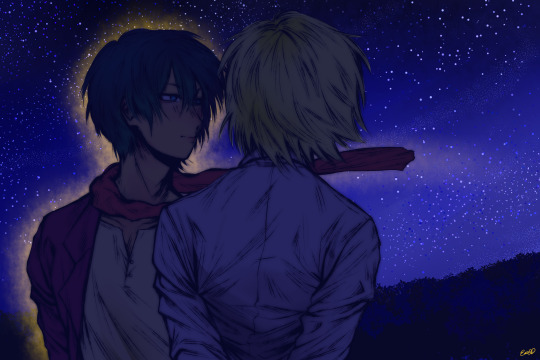
i've been listening to the stars are falling by cepheid on loop while drawing this so. their song now
#makokuu#makoto x kuusuke#makoto teruhashi#kusuke saiki#saiki kusuo no ψ nan#saiki k#tdlosk#sknpn#digital art#doodle
170 notes
·
View notes
Text
Discovery Alert! In a new discovery released on September 12, 2023, James Webb Telescope Validates Hubble's Findings on Universe Expansion Rate. Read full article here
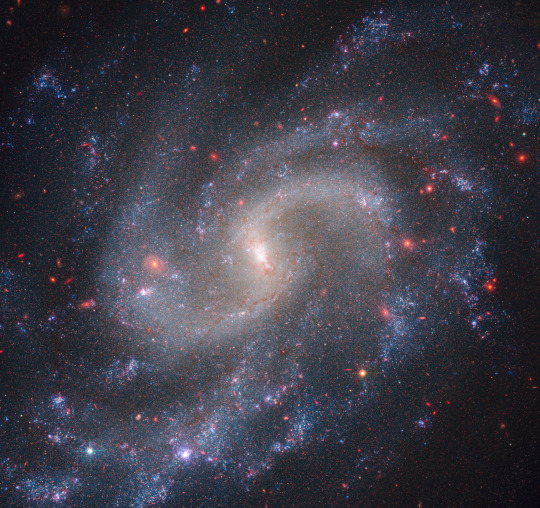
Prepare to be awestruck because NASA's James Webb Space Telescope has just dropped some mind-blowing revelations about the universe's expansion rate, and it's a cosmic rollercoaster of discoveries! 🌠
🔭 Imagine a telescope that can peer back in time and unveil the secrets of our universe's evolution. That's exactly what the Webb Telescope, NASA's latest star player, has been up to!
🌟 The Hubble Constant Mystery: One of the cosmos' biggest head-scratchers has been the Hubble Tension – a cosmic conundrum stemming from a puzzling mismatch between the measured expansion rate (Hubble constant) and its prediction from the Big Bang. 🌌
🌠 Cepheid Variables & Type Ia Supernovae: Webb's got some stellar assistants – Cepheid variables and Type Ia supernovae. These cosmic gems help astronomers measure vast cosmic distances and, by extension, the Hubble constant. 💫
🌈 Infrared Vision Superpowers: What sets Webb apart is its remarkable near-infrared vision. Unlike visible light, infrared light pierces through cosmic dust, offering clearer views of these celestial distance markers. 🌌
🪐 Results So Far: Webb's observations have confirmed the precision of the Hubble Space Telescope's earlier measurements while significantly reducing measurement noise. It's like seeing the universe's secrets with a magnifying glass! 🔍🌠
🔮 The Hubble Tension Deepens: But here's the kicker: the Hubble Tension persists! The universe seems to be expanding faster than we predicted. Could this be a hint of exotic dark energy, dark matter, or something completely unexpected? 🌌✨
🚀 The Cosmic Adventure Continues: With Webb confirming Hubble's measurements, the quest to decipher the universe's mysteries deepens. What's next? More observations, more data, and more cosmic riddles to solve! 🌌🔍
Join us as we journey into the heart of the cosmos, armed with the Webb Telescope's revelations and an insatiable curiosity for the universe's grand secrets. Stay tuned for more cosmic updates! 🌠🛰️
58 notes
·
View notes
Photo
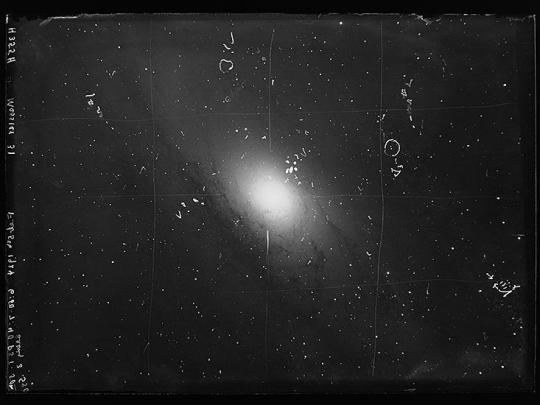
A copy of Edwin Hubble's 4-by-5-inch glass plate of M31, which he took with the 100-inch telescope on Mount Wilson. Like many astronomers of his time, he adorned these plates with colorful notations—circles and arrows that identify candidate Cepheid variables, reference stars, and other notable objects. He numbered each confirmed Cepheid variable in order, often followed by exclamation points, as if he couldn’t contain his excitement. In this digital print of a plate made in early 1924, you can make out the notation “V4!!!” in the lower left corner.
“My god, it’s full of stars!”
104 notes
·
View notes
Text

You can't flee from your fate
Nothing will save you from calamitous embrace
A destiny etched in stone, written and bound
Dance your encore with grace
The stars will witness your empyreal ballet
Erupt into violent rage, embers and ash remains
Messenger In Flames - Cepheid (Ft. UN3H)
#art#fanart#league#jhin lol#jhin the virtuoso#khada jhin#jhin league of legends#jhin#dark cosmic jhin#star guardian jhin#star guardian ascension au#star guardian#lol jhin#league jhin#league of legends jhin#league fanart#jhin league
20 notes
·
View notes
Text
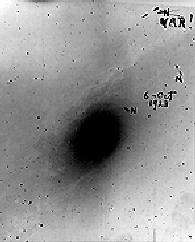
Andromeda Nebula: Var! - April 6th, 1996.
"In the 1920s, using photographic plates made with the Mt. Wilson Observatory's 100 inch telescope, Edwin Hubble determined the distance to the Andromeda Nebula - decisively demonstrating the existence of other galaxies far beyond the Milky Way. His notations are evident on the plate shown above (the image is a negative with stars appearing as black dots against the white background of space). By intercomparing plates, Hubble searched for "novae", stars which underwent a sudden increase in brightness. He found several on this plate and marked them with an "N". Later he discovered that one was actually a type of variable star known as a cepheid - crossing out the "N" he wrote "Var!" (upper right). Thanks to the work of Harvard astronomer Henrietta Leavitt, cepheids, regularly varying, pulsating stars, could be used as "standard candle" distance indicators. Identifying such a star allowed Hubble to show that Andromeda was not a small cluster of stars and gas within our own galaxy, but a large galaxy in its own right at a substantial distance from the Milky Way. Hubble's discovery is responsible for our modern concept of a Universe filled with galaxies."
#nasa#space#cosmos#universe#astronomy#astrophysics#astrophotography#andromeda nebula#cepheid variables
17 notes
·
View notes
Photo

2023 April 11
North Star: Polaris and Surrounding Dust
Image Credit & Copyright: Javier Zayaz
Explanation: Why is Polaris called the North Star? First, Polaris is the nearest bright star toward the north spin axis of the Earth. Therefore, as the Earth turns, stars appear to revolve around Polaris, but Polaris itself always stays in the same northerly direction -- making it the North Star. Since no bright star is near the south spin axis of the Earth, there is currently no bright South Star. Thousands of years ago, Earth's spin axis pointed in a slightly different direction so that Vega was the North Star. Although Polaris is not the brightest star on the sky, it is easily located because it is nearly aligned with two stars in the cup of the Big Dipper. Polaris is near the center of the eight-degree wide featured image, a digital composite of hundreds of exposures that brings out faint gas and dust of the Integrated Flux Nebula (IFN) all over the frame as well as the globular star cluster NGC 188 on the far left. The surface of Cepheid Polaris slowly pulsates, causing the famous star to change its brightness by a few percent over the course of a few days.
∞ Source: apod.nasa.gov/apod/ap230411.html
82 notes
·
View notes